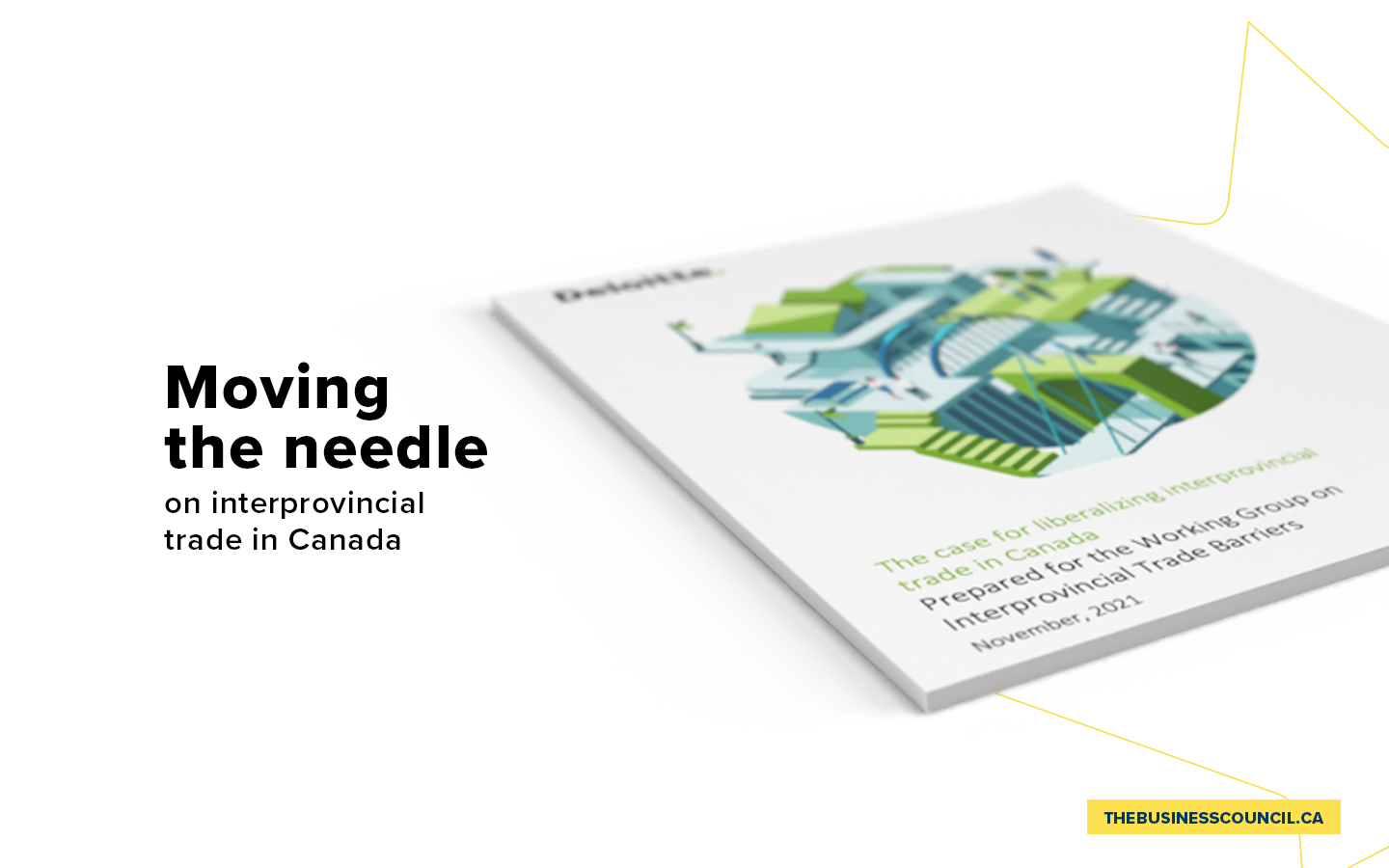Moving the needle on interprovincial trade in Canada
Much ink has been spilled on analyzing September’s federal election, but most pundits and observers agree on one thing: Canadians want to see their elected officials – no matter what party or level of government – work together on a strong, sustainable, and inclusive recovery.
The pandemic has had a heavy toll on our physical, mental, social and economic well-being. Canadians don’t want to hear more explanations about jurisdictional authority, or excuses about who is responsible for what. Rather, they want real progress on matters that will improve their lives and bring hope that better days lie ahead.
It is within this context that I believe there’s a rare opportunity to make a difference on something that has long dogged the country – interprovincial trade barriers.
As identified by Deloitte in a report released this week, the economic impact of these barriers is felt on both macro and micro levels. They depress Canada’s real GDP by nearly 4 per cent and reduce government revenues by nearly 4.5 per cent. For Canadians, these barriers lower household incomes and wages by 5 and 5.5 per cent respectively. They also limit the choices we make every day – from the contractors we can hire to the food we buy and the wine we drink.
We all know the harm these barriers cause. We all know they need to go. And yet despite our best efforts they remain in place. Like the myth of Sisyphus, every time we make headway, it seems like the boulder keeps rolling back. Even though the Canadian Free Trade Agreement came into force in 2017, only three provinces have improved their openness to trade, while barriers have increased in six other provinces trade, as reported by the Montreal Economic Institute earlier this year.
It is exactly at this moment when Canadians are looking at their leaders for new ways of thinking and acting, that we can finally flip the script on interprovincial trade barriers. Fortunately, Deloitte’s report offers four practical recommendations that policymakers should take seriously:
- Create a public repository of information about trade barriers in Canada. Trade barriers are often poorly understood by both officials and the general public. A searchable public database – modelled after the Canadian Institute of Health Information – would create transparency and help policymakers strengthen the case for reform in specific areas. It would bring stakeholders and governments together to design solutions to trade barriers more effectively.
- Recognize the full potential of mutual recognition. Addressing trade barriers on a case-by-case basis has proven to be a long and trying process. Embracing mutual recognition as a policy principle can accelerate the removal of trade barriers while minimizing the costs to taxpayers.
- Collaborate widely on solutions. Internal trade discussions are too often left to governments without genuine input from the private sector. Creating a steering committee that includes policymakers, the private sector and subject matter experts can identify new solutions to old problems. It can also help focus our efforts on the barriers that restrict Canada from fulfilling its full economic potential.
- Recognize that there are costs to unlocking the full economic potential of free trade. Canada can make real strides if policymakers properly account for the costs of creating freer trade. In some cases, bold decision-making may come at political cost. In other cases, the costs may be administrative, or borne by individuals or businesses, and may warrant compensation to support trade barrier removal.
Deloitte’s report offers a fresh take on tackling a complex policy issue that is as old as our country. But more than just sound advice, the report demonstrates the importance of process with contributions from fifteen business groups and think tanks from across the country. If we are to move the needle in the right direction, it will take collaboration that goes beyond the realm of policy.
We have seen the success that has resulted from a “Team Canada” approach to international trade negotiations and challenges. Now we need a similar approach to open trade within our own borders.
Latest Opinion
It’s time for Canada to fight back against the ransomware epidemic
October 23, 2025










